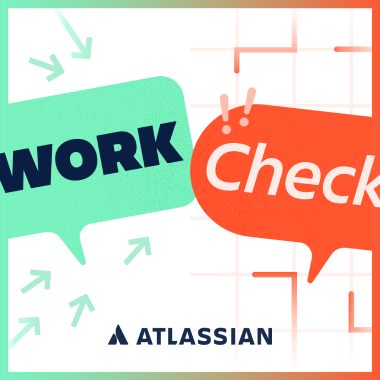When you promote an employee, much of the focus is on what’s next. You talk through the responsibilities they’ll take on, the skills they’ll develop, and the initiatives they’ll lead.
But there’s another important thing to think through: what’s left? When an employee makes a move – whether they move up or move out entirely – you end up with a blank space on your org chart.
Their old responsibilities and tasks are left uncovered. And, as a leader, it’s up to you to figure out how you’ll bridge that gap on your team and smoothly transition duties and to-dos to someone else. It can feel like a frantic scramble – unless you were proactive with your succession planning.
What is succession planning?
Succession planning is the process of identifying the key roles on your team and figuring out how you’ll fill them when they’re left vacant (whether that’s because of employee turnover, promotions, restructuring, company growth, or something else).
Think of it as future-proofing your team. Rather than staring slack-jawed at your org chart when one of your team’s managers moves to a director position or retires, you’ll have a plan in place for how to move forward without the wheels falling off.
It’s important to note that succession planning isn’t only about identifying replacements – it also involves adequately preparing people to assume those roles or fulfill those responsibilities when the time comes, so nobody is left feeling like they’re thrown to the wolves.
When should you do succession planning?
Here’s the simplest answer: If you don’t already have a succession plan in place at your organization, you’ll want to do it now.
As you’ve likely already experienced, you never know when you’ll be left with an unexpected vacancy or need to accommodate a shift in company direction. Your succession plan gives you at least a loose roadmap you can lean on to accommodate those changes.
That might make succession planning sound like a one-time event, but in reality, it’s an ongoing process. You’ll create an initial plan, but then revisit and refresh it regularly, such as during and after:
- Company restructurings
- Significant leadership changes
- Periods of organizational growth
- Changes to your strategic plan
- Performance reviews and career development conversations
Additionally, major personnel changes – like upcoming retirements – are also times when you want to return to your succession plan and confirm it’s up to date and ready to facilitate a smooth transition.
Put simply, right now you’ll outline a plan that makes the most sense for your organization as it exists today. But as your organization changes, you’ll change your succession plans too.
Why does succession planning matter?
Unless somebody is imminently leaving (or has already left) your organization, succession planning doesn’t feel as pressing as the other items on your to-do list. But there are a few reasons it’s worth proactively making the time for it:
- Ensure better continuity for your team: A succession plan minimizes disruptions to your team and organization and helps you navigate transitions with fewer risks and hiccups.
- Offer clear career paths and plans: Your succession plan can also give your team visibility into growth opportunities, development paths, and future plans for the team – which can improve morale and engagement.
- Prepare your team for change: Whether you’re anticipating employee turnover or rapid growth, your succession plan helps you prepare your team and organization for change by identifying (and training) people who can step in when needed.
5 succession planning steps to prepare for the future
So, your main objective right now is to create a succession plan that’s built on your organization’s current structure, staff, goals, and vision for the future. Follow these five steps to put your initial succession plan together.
1. Identify your key roles
Not every single role on your team needs a succession plan in place. The process is a lot more manageable if you start with roles that have oversight, such as leads, managers, and directors. Traditionally, succession planning is about identifying and developing replacements for leadership roles specifically.
Even if you do want to eventually have an idea of how you’d cover any position on your team, focusing on leaders is the best place to get the process started – especially since vacancies in those positions can cause the biggest disruptions on your team.
Of course, if you’re tackling succession planning now because you have a major vacancy to fill (for example, your sales manager left and you don’t know how you’ll replace them), then that’s the position you’ll want to start with.
2. Define what the future could look like
Unexpected vacancies will crop up on your team, whether it’s due to unanticipated medical leave or people moving into different roles with different companies.
But there are versions of the future that you can plan for – and career development may be the most obvious one. What roles are currently on your team? What do you anticipate your team will look like a few years in the future? How do you think people will move through those roles?
Grab your current org chart if you have one, or sketch it out on a sheet of paper if you need to. Then, map out how you think that will grow and evolve down the line – using your company’s overarching goals and conversations you’ve had with other leaders as a guide. Ultimately, the future direction of your team should support the company’s broader vision and objectives.

It might seem like an oversimplified first step, but this visual is undeniably helpful for understanding how the individual pieces of your team fit together and impact each other. That’s something you’ll need a good grasp on as you move through the rest of the planning process.
3. Hash out the details of each key position
Whether you’re planning for future scenarios or scrambling to cover the responsibilities of someone who unexpectedly left, you can’t identify successors if you don’t have a solid handle on the ins and outs of the position. While you might think you already understand what people are up to each day, you’ll likely be surprised by how many tasks and responsibilities fly under the radar.
How you approach learning about a position will depend largely on whether it’s currently filled or vacant. Here’s how to tackle this in each scenario.
If the position is currently filled…
Imagine you have an existing sales manager, but you want to know the details of what they do so you can prepare to cover those responsibilities in the event this person moves up to a new position or exits your organization entirely.
You can get the lowdown on what they’re responsible for by:
- Dedicating a portion of your one-on-one conversations to touching base on what’s on their plate
- Offering a brief questionnaire about the major tasks they handle, the skills that are most essential for their role, the roles and teams they collaborate with, and the tools and software they frequently use
- Asking them to document their common processes and workflows so you can better understand them (and cover them – not just for vacancies, but even for vacations)
Make it clear that this isn’t focused on replacing them right now (there’s no need to cause panic about job security), but that these reference guides will be a huge help as your team grows, you plan advancement paths, and you figure out how to keep things running smoothly for your team.
If the position is currently vacant…
It’s a little tougher to learn the daily minutiae of a position when there’s nobody actively doing it – such as a position that somebody already exited or an entirely new position your company is adding.
In those cases, it’s helpful to:
- Connect with people and teams that worked (or will work) closely with that position to understand what responsibilities and skills are most pertinent
- Revisit past performance reviews, job descriptions, and other resources related to that position (obviously, this only works if it was an existing position on your team)
- Review your company’s objectives, vision, and strategic plan to identify skill gaps and ways this role could be even more impactful
4. Identify your options
You’re looking at a position – whether it’s one that’s currently open or one that might be open in the future for myriad reasons. Now it’s time to ask yourself: How will you cover those responsibilities?
While succession planning might immediately inspire visions of sliding someone into that space like organizational Tetris, that’s not your only option. When you have an open role, you could:
- Hire a brand new employee
- Move an internal employee
- Divide responsibilities among team members
- Outsource work to external vendors
- Eliminate the position
…or any combination of all of the above. Since leadership positions often come with hefty impact and responsibilities, the first two (hiring or moving an employee) will likely be your most common approach. But, resist the urge to box yourself in.
Remember, the previous step equipped you with the details of each role that you’d need to fill or cover, so you have a mold to figure out which routes are most feasible and the least disruptive.
5. Develop your tentative plan
You’ve determined where your team is headed, who currently does what, and what choices you have to fill role gaps. Now, all that’s left to do is figure out what your ideal plan looks like.
Let’s sketch this out with an example. You and your company leadership have already discussed the potential of adding the Head of Content role to your marketing team within the next year or so. Your current Content Marketing Manager has expressed interest in that promotion – and you know they’d be a great fit.
But, that upward movement leaves a key management role on your team (the Content Manager position) empty. What does that mean for the future and that opening? You might decide that you’ll:
- Promote your existing Content Marketing Manager to Head of Content
- Promote your existing SEO Specialist to Content Marketing Manager
- Hire a new employee to fill the vacant SEO Specialist role, but outsource that work to an SEO agency until you find a suitable replacement
Keep in mind that this plan might not be bulletproof when the time comes – things change. However, having this rough plan in place at least gives you a starting point when you need to address role gaps.
Effective succession planning needs clear career development
So much of succession planning feels like moving the pieces of a big puzzle. That makes it easy to get so focused on logistics that you forget about the human element – mainly, career ambitions and development.
Your ideal plan might be to eventually move your existing Content Marketing Manager into the Head of Content role. But, if they aren’t actually interested in taking that step up, that plan doesn’t do you any good.
That’s one of the many reasons it’s important to have regular and honest career development conversations with all of your employees – even with team members that don’t yet have a clear next step or path to advancement.
In your one-on-one meetings, make sure you’re asking questions like:
- What career goals are top of mind for you right now?
- What’s your ideal next step in your career?
- Do you have access to the learning and development resources you need?
- What skills are you hoping to build upon in the next year?
- What do you value most in your career?
- Are there other areas of the company you’d be interested in exploring?
These prompts and candid conversations make employees feel heard, valued, and supported. They also give you useful information you can use to not only iron out succession plans, but ensure you have the right talent to stick with those plans.
And while knowing where employees want to go is crucial, you also need to be prepared to help them get there. If your succession plan for a specific role hinges on moving somebody else up, start equipping them with the necessary skills now.
That might mean providing relevant training, allowing them to own specific projects or functions, or offering mentorship. By laying that foundation, you’ll ensure your succession plan doesn’t just point to a person who can take the reins, but a person who’s qualified and ready to do so.
Create a flexible (not final) succession plan
Effective succession planning gives you a roadmap that you can follow as your team grows and people move into different positions (whether that’s with your company or elsewhere). Going through the process allows you to feel far more prepared to address role gaps without a frantic scramble.
However, even if you plan everything as carefully as possible, it doesn’t guarantee smooth sailing.
Somebody who’s a crucial part of the plan might unexpectedly exit your company. Or your department might go through a reorganization. There will still be times when things slip through the cracks or you need to identify some less-than-perfect solutions just to make it through.
For that very reason, remember that succession planning isn’t a one-and-done activity and you need to make adjustments as things change. Remember, as counterintuitive as it seems, the best plans are flexible plans.





 )
) 




































